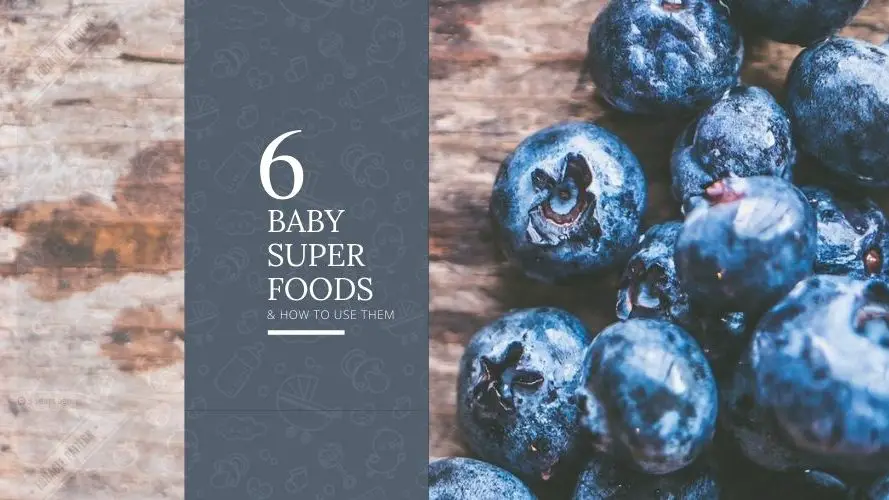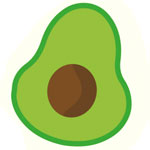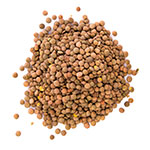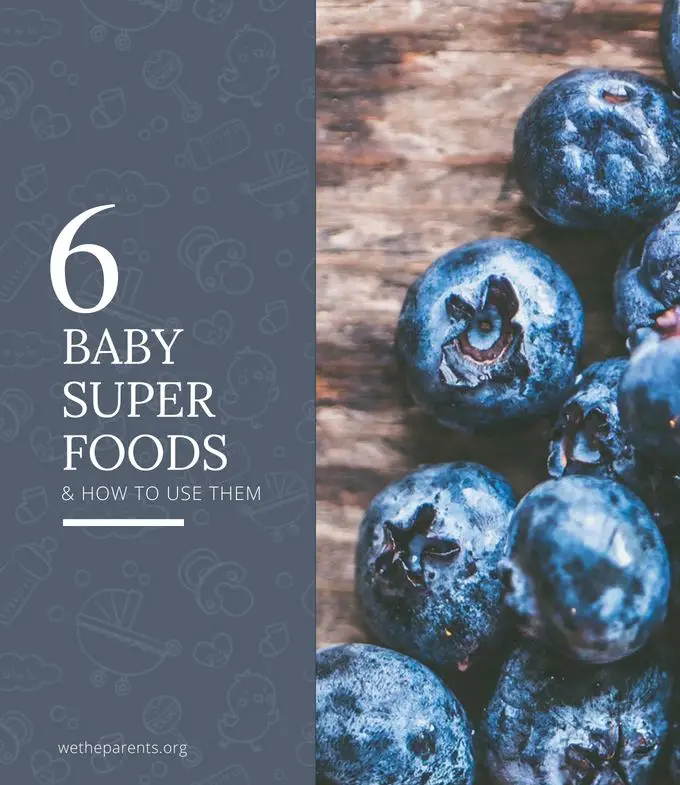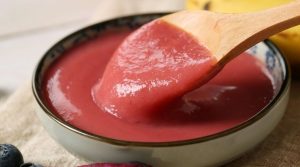Starting solid foods is a significant milestone in you and your baby’s life. It is the time when they get introduced to new textures and flavors besides breastmilk. It can be an overwhelming experience for your little one as well as for you too.
Babies have little tummies. Their willingness to try something new depends on each baby. Every baby is different. So at times, they might eat quite a bowlful and other times just a lick from few spoons, and they are done.
We as parents have to make sure that even if they have few spoonfuls, they are getting enough nutrition to help them grown and develop. This goal can be achieved by introducing them to “Superfoods.”
What are superfoods?
Superfoods are food that is filled with all the essential nutrients like vitamins, minerals, calcium, iron, carbohydrates and omega 3 fatty acids for the healthy growth and development of the body. They are high in antioxidants, flavonoids, phytosterols, isoflavones, and phytoestrogens. Superfoods are an excellent source of probiotics and dietary fiber along with healthy fats.
Related: Baby-Led Weaning vs Purees, Does It Have to Be One or the Other?
My favorite baby-friendly superfoods?
Following is a list of amazing superfoods which you can introduce to your little ones from the age of 6 months. At this age, the infant’s digestive system is mature enough to eat and digest solid foods. The key here is to start slowly with food mixed with infant cereal and then gradually introducing them to more complex food groups and textures.
Sweet Potatoes
When to introduce:
This distant relative of potatoes can be introduced to babies as early as six months.
Why is it superfood:
Sweet Potatoes are the orange-fleshed vegetable which is rich in antioxidants, beta-carotene along with fiber and vitamin B6. It contains a reasonable amount of iron, calcium and vitamin C, which makes it a valuable starchy food.
How to introduce:
Steaming the peeled sweet potatoes and then turning them into a smooth puree can make your baby’s first healthy meal. Mix it up with iron-fortified baby cereal, and you have a perfect lunch or dinner for that little tummy.
Combination ideas that go well:
You can combine sweet potatoes with apricots, avocados, broccoli, green beans, pears, peas or spinach.
Related: How to Wean a Toddler (Gently and Effectively)
Avocados
When to introduce:
Avocados can be introduced to babies as early as 6 months.
Why is it a superfood:
Avocados are high in monounsaturated fat content which is good fats. They also contain valuable amounts of vitamin C, K and B6, niacin, folate and pantothenic. Avocados have notable amounts of potassium, copper, magnesium, and manganese. It has the highest fiber content in fruit family.
How to introduce:
Avocados are a fantastic No-Cook meal option. Just cut into pieces and mash them. They are ready to serve.
Combinations ideas that go well:
Combine avocados with bananas, peaches, cumin or mangoes. You can also add a little cilantro to give them a flavor and aroma.
Related: The Best Vegetables for Babies by Stage
Lentils
When to introduce:
Various kinds of lentils can be introduced to your baby’s diet from 8 months of age. By this time, the baby used to the puree and is now ready for more complex food groups, textures, and flavors.
Why is it a superfood:
The humble little lentils are one of the oldest whole foods. Lentils have a vast range of nutrients which has B vitamins. They are exceptionally rich in folate which is crucial for brain development. Lentils also include minerals like manganese, phosphorus, zinc, magnesium, and copper. Lentils are considered to be the most abundant plant sources of iron. They are rich in protein and contain both soluble and insoluble fiber. Phytonutrients present in lentils include flavonoids, isoflavones, and phytosterols which makes this a superfood.
How to introduce:
Lentils can be cooked with other vegetables and made it into a puree or thick soup. It is a great way to combine other fruits and vegetables to create a complete wholesome meal.
Combination Ideas:
Lentils can be combined with sweet potatoes, potatoes, rice, tomatoes, spinach, herbs, etc.
Related: The 5 Best Baby Food Makers (2021 Reviews & Quick Guide)
Quinoa
When To Introduce:
Quinoa can be a part of your baby’s daily diet from the age of 8 months.
Why Is It A Superfood:
Quinoa is called as the “Mother Grain” by Incas. It’s super-grain/ superfood status hails from its abundant nutritional value. Unlike other grains, Quinoa contains a high level of protein, with a proper balance of all essential amino acids. It is an excellent source of manganese, magnesium, copper, phosphorous, iron and zinc. Quinoa grains are filled with B vitamins and fiber. These grains are gluten-free, so they are great for babies with gluten allergies.
How To Introduce:
Quinoa is cooked just like rice. Mixing a right combination of vegetables or fruits with quinoa can make a perfect meal. You can make a breakfast porridge, quinoa vegetable puree or make a pilaf for older kids.
Combination Ideas:
Quinoa can be combined with potatoes, sweet potatoes, spinach, peas, celery, carrots, apple, beets, pears, poultry, etc.
Blueberries
When To Introduce Blueberries:
Blueberries can be introduced to babies between 8 to 10 months of age. However, they rarely cause an allergic reaction, at times they might give a diaper rash. So it’s always better to introduce to this superfood little later if your baby has a sensitive stomach.
Why Is It A Superfood:
These little dark purple gems are the first ones to be named as Superfood. Studies show that blueberries high phytonutrient content gives them this status. Blueberries contain flavanols which are associated with antioxidant and anti-inflammatory properties. Blueberries are filled with essential nutrients like vitamin C, K, and folate. They are a good source of potassium, phosphorous, magnesium, calcium, sodium and iron. Blueberries are a good source of fiber as well.
How To Introduce:
Blueberries are quite versatile. They can be introduced through smoothies, mixed with fruit purees, adding them to muffins or pancakes. For ages 1 year and above they make a great finger food and snack.
Combination Ideas:
Blueberries can be combined with breakfast cereal, oatmeal, yogurt and so on.
Related: When Do Babies Start Eating Baby Food?
Yogurt
When to introduce:
Yogurt can be one of the delicious and healthy food to introduce to your baby at the age of 8 months and above. It gives them a delightful dose of calcium for healthy bones. For babies with milk allergy, use caution. Choosing a whole milk yogurt is beneficial since babies need all the essential nutrients in one little bowl.
Why is it a superfood:
The bacterial fermentation of milk produces yogurt. It is considered one of the vital health foods. Yogurt is rich in calcium, phosphorus and B vitamins. Bifidobacterium found in yogurt, works in harmony with the bacteria already present in the intestines which makes sure that harmful bacteria do not overpopulate our system. This helps in healthy digestion and acts as a natural probiotic. Besides these, Yogurt is a good source of vitamin A, B6, B12 and vitamin D. It is also filled with calcium, phosphorous, riboflavin and magnesium.
How to introduce:
Yogurt is another No-Cook meal. Add fruit puree to plain yogurt and let the baby enjoy the richness of yogurt along with the sweet flavor of fruits. Yogurt can serve as a sweet and savory dip as well. Mix it with grated cucumber, and you have a meal for hot summer days.
Combination ideas:
Combine yogurt with fruit purees, breakfast cereal, smoothies, dips and so on.
This is a small list, but we have an abundance of food groups which can be beneficial for our little humans during their early years. Incorporating all of these slowly into their everyday diet will help them grow and form base trying out new textures and flavors.
I hope this Superfood list will give you ideas on introducing these food groups to your baby’s everyday diet.
What is your baby’s favorite Superfood? Do let us know. Till then, Happy Cooking.
About the author:

Deepika Haldankar is a stay-at-home mom and Food Blogger. She is a Recipe Developer, Food Photographer, and Writer at EasyBabyMeals.com. She believes that feeding nutritious food in early life is extremely important. Hence she develops recipes that are full of flavor and nutrition for babies, toddlers, kids, and grownups as well. The recipes are simple and can be prepared in just a few minutes.
Social Media: Facebook | Twitter | Instagram
References:
Deane. A (2014) The Complete Encyclopedia Of Superfoods. Hermes House
Bessinger.J.L (2010) Best Food For Your Baby And Toddler. New York. Sterling Publishing.


